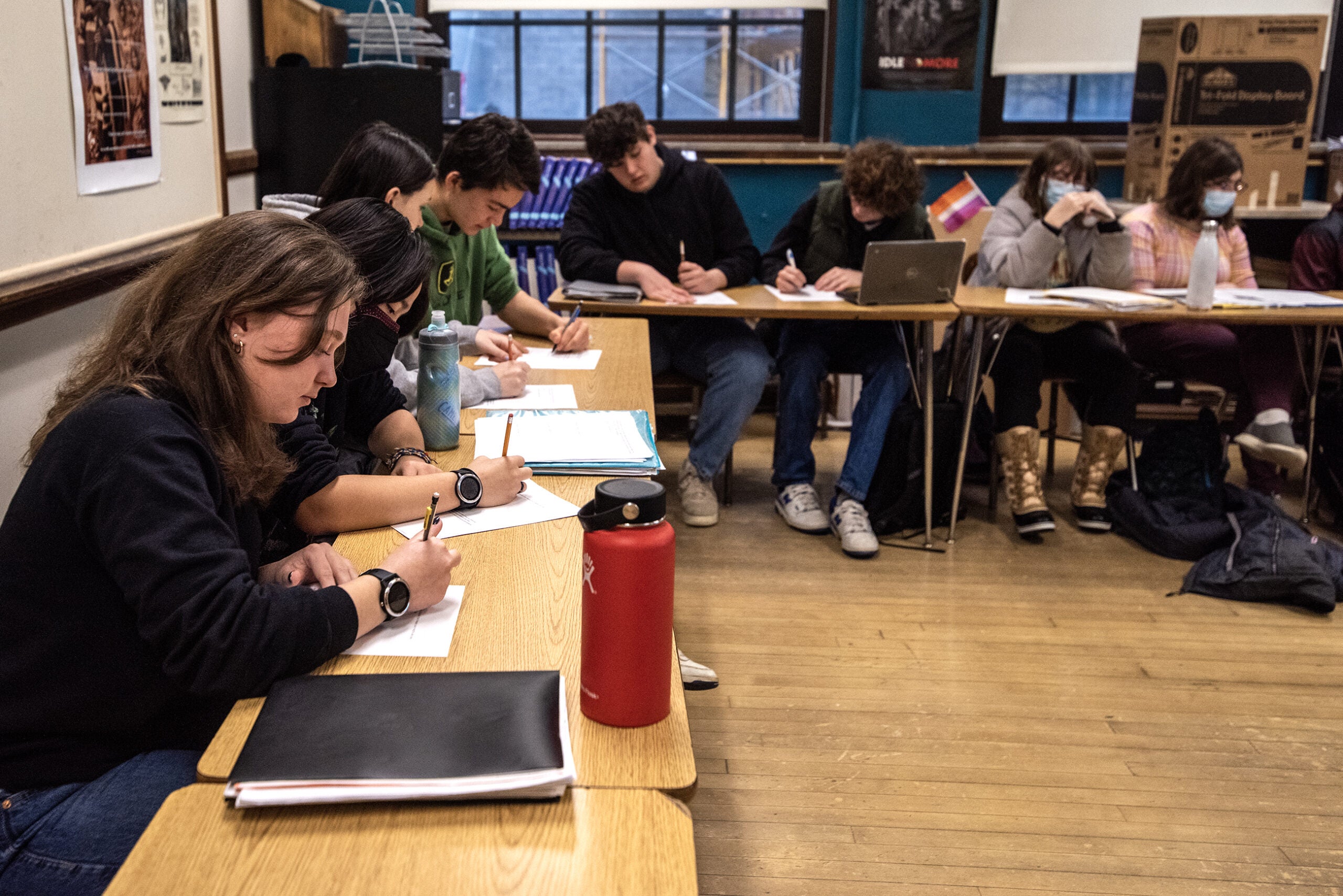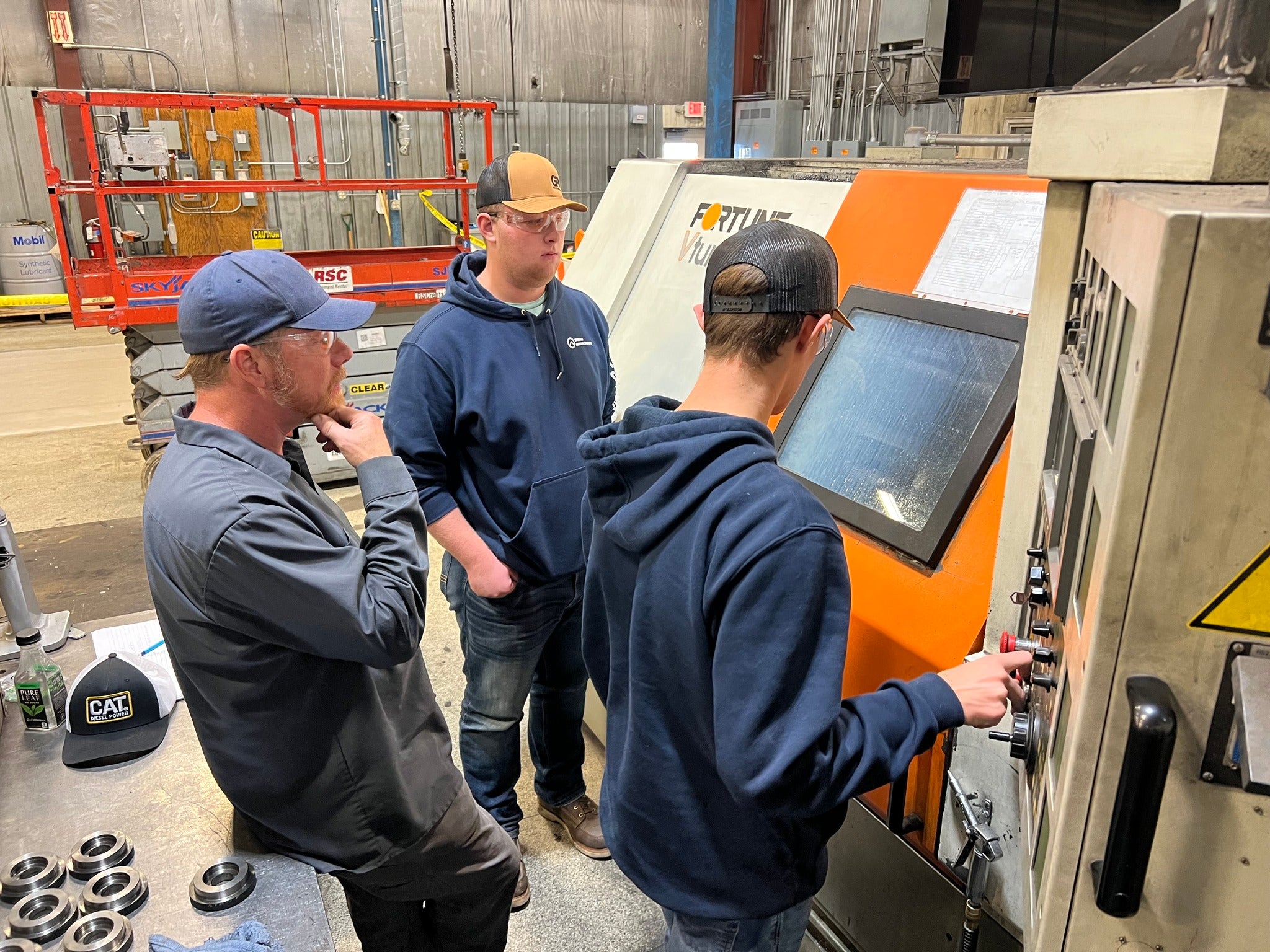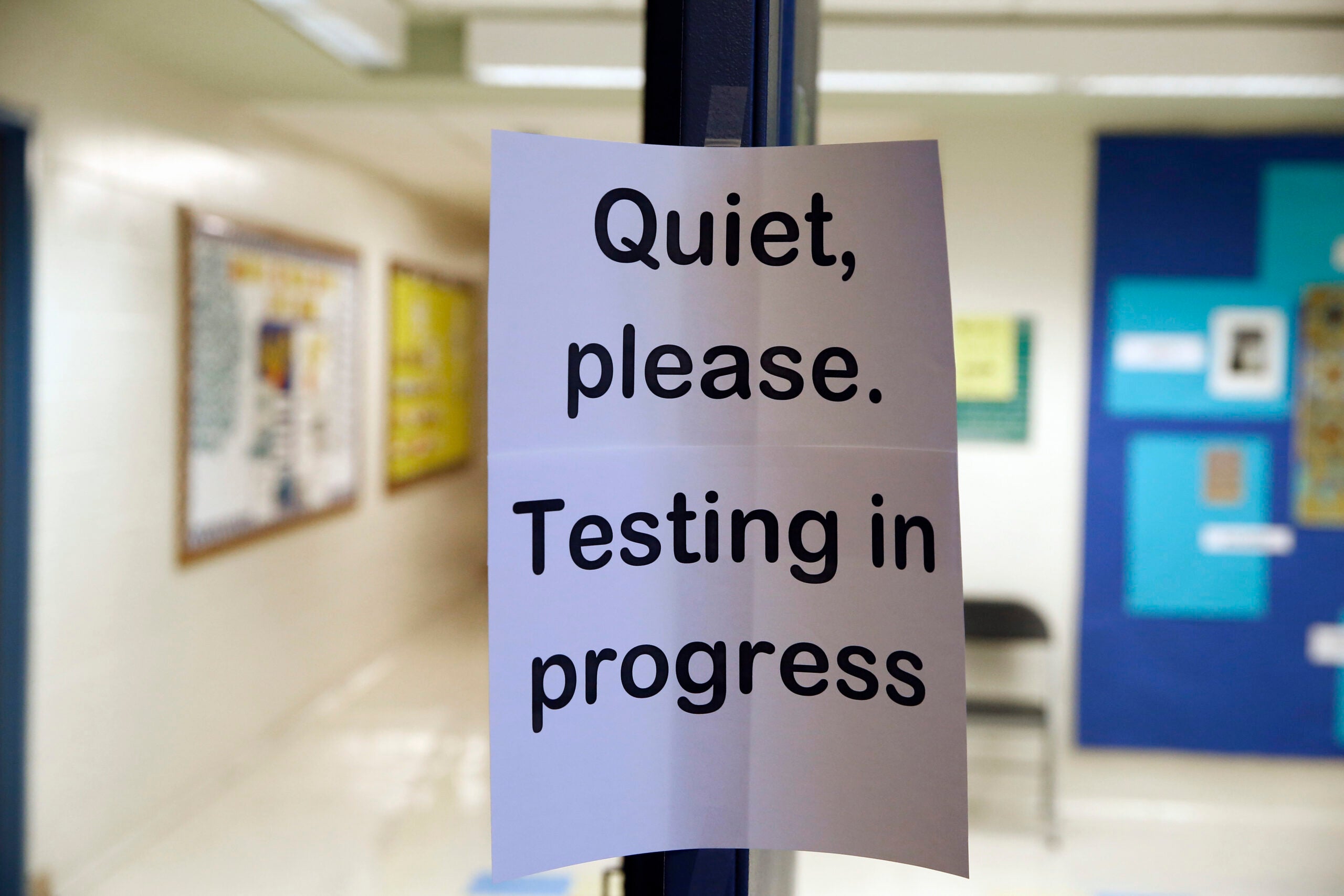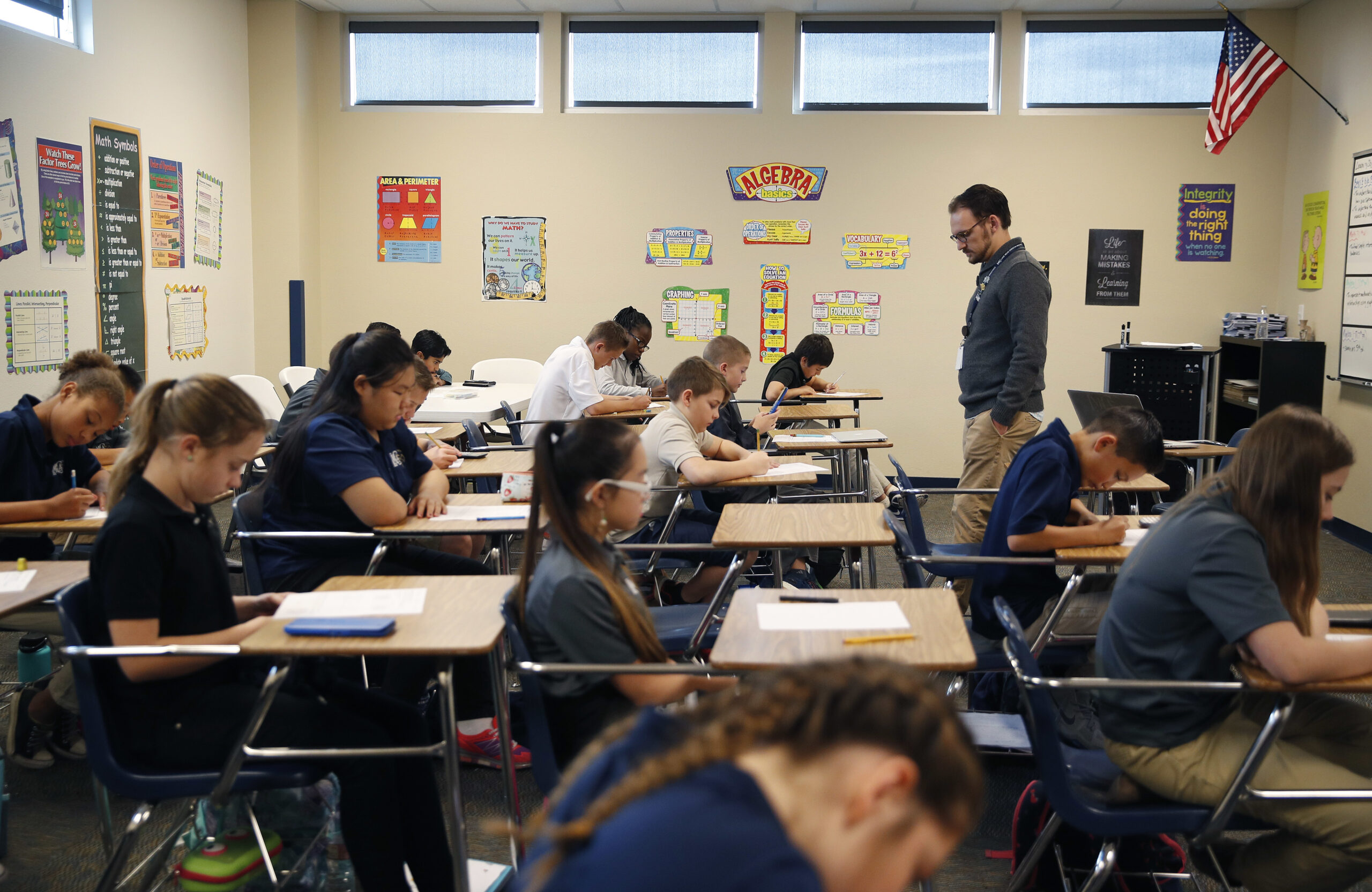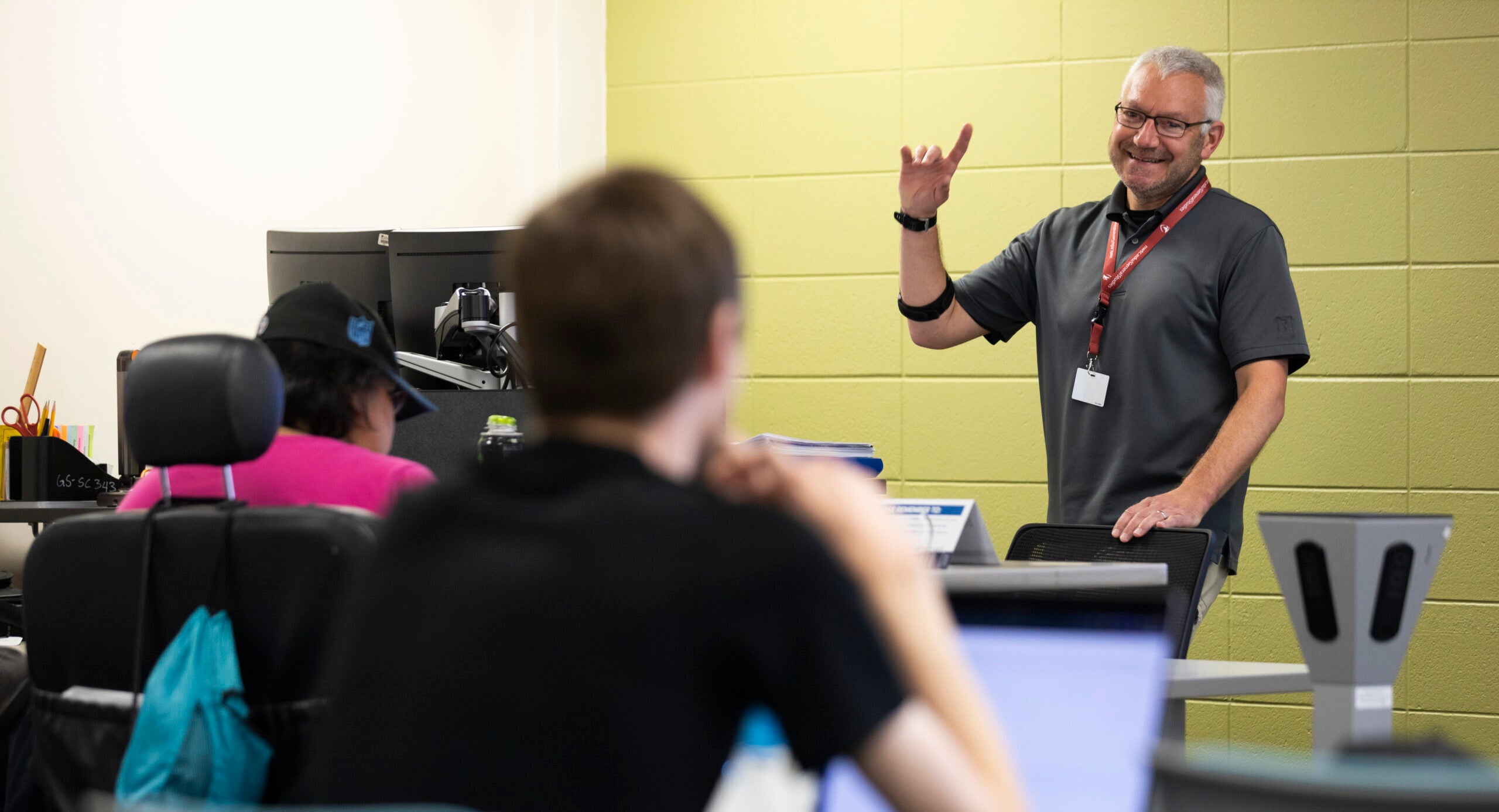After a lull following the pandemic, more Wisconsin high school students are starting to take Advanced Placement courses and exams again.
But data shows students of color and lower socioeconomic backgrounds continue to fall behind in enrolling in the courses and taking the exams, which give kids the chance to earn college credits in high school.
During the 2021-22 school year, Wisconsin students in ninth through 12th grade took 67,320 AP exams. In many cases, students took exams for multiple AP courses.
News with a little more humanity
WPR’s “Wisconsin Today” newsletter keeps you connected to the state you love without feeling overwhelmed. No paywall. No agenda. No corporate filter.
About three-fourths of Wisconsin school districts offer advanced placement classes to high school students. Created by the national non-profit College Board, the university-level classes offer students the chance to earn credits in courses like calculus, psychology and world history. Students who pass an exam on completion of the course can earn college credits.
Of the AP exams taken last year, nearly 80 percent of the tests — 53,584 — were taken by white students. Asian students took about 5,000 tests and Hispanic students took about 4,500 tests.
Just 2.4 percent of the tests — 1,600 — were taken by Black students.
When looking at socioeconomic status, about 14 percent of the AP exam test-takers were economically disadvantaged, according to state data, compared to 86 percent of test-takers who were not.
Wisconsin requires districts to cover the cost of the tests for students who qualify for free or reduced lunch.
Mark Schwingle, an education consultant with the state Department of Public Instruction, said the state is trying to tackle the economic and racial disparities in who is taking the tests.
“It’s not just about giving them access to the AP coursework, but it’s also about making sure they can participate, should participate and obviously to the extent possible that they succeed in this AP coursework,” Schwingle said. “And obviously we believe they can.”
AP exams also offer an economic advantage
AP exams are scored on a 5-point scale. Students who earn a 3 or above qualify for college credit.
Of the 67,320 AP tests taken last year, 66 percent scored a 3 or above, according to state data.
There are racial disparities among scores as well, with 68 percent of students identifying as white scoring a 3 or above in 2021-22, compared to 71.8 percent of Asian students, 51 percent of Hispanic students and 33.7 percent of Black students.
Sara Shaw is an education researcher with the Wisconsin Policy Forum, which has also been following disparities in AP testing.
Shaw said there are three places a school district could focus on to decrease disparities:
- Who is taking the course and is there selection bias?
- Who is taking the exam?
- What percent of students taking the test is earning a score of 3 or above?
“A district or school wanting to solve for disparity should start by realizing where in the pipeline do they need to focus their effort and once that identification happens it might be a question of where students need further support or encouragement,” Shaw said.
AP inequity across Wisconsin
Of the state’s 421 public school districts, 332 districts offer AP courses and exams. But of the state’s 1,987 public high schools, only 410 offer AP courses and exams signifying patterns of inequity across the state, according to DPI.
“This is just a fraction of what we would like to see, but the good news is in many districts there is something available,” Schwingle said. “It’s true that AP provides the chance for a student to gain advanced standing in college. But what’s even more important is how these courses give students a chance to prepare for advanced level coursework.”
Shaw said it’s encouraging to see the beginnings of a rebound of more students taking AP courses and tests since the pandemic.
“The question is: Is that rebound going to be an equitable rebound?” Shaw said. “Our Asian and our white students did recover and did go beyond where they were pre-pandemic and our other student groups have not yet.”
At Wilmot Union High School in western Kenosha County, 25 percent of the school’s 900 students took AP tests last year.
The school, which is 86 percent white and 21 percent economically disadvantaged, places a high priority on AP classes, offering 20 different subjects.
About 72 percent of the students who took the test scored a 3 or higher.
Wilmot was one of the 142 schools recently recognized by DPI for having more than 30 percent participation in at least one AP exam and more than 70 percent of students earn a score of 3 or above.
Deb Chike has taught advanced placement literature at Wilmot High School for 24 years.
Over the last two decades, her classes have grown from an average of about seven students to 30. She said she can count on one hand in 24 years the students who haven’t taken the AP test after completing her course.
“I really firmly believe in my heart that (the) test is valuable, but it’s taking these Advanced Placement courses is where the real the value is,” Chike said. “They’re exposed to advanced content and they are exposed to advanced expectations.”
Wisconsin Public Radio, © Copyright 2025, Board of Regents of the University of Wisconsin System and Wisconsin Educational Communications Board.

